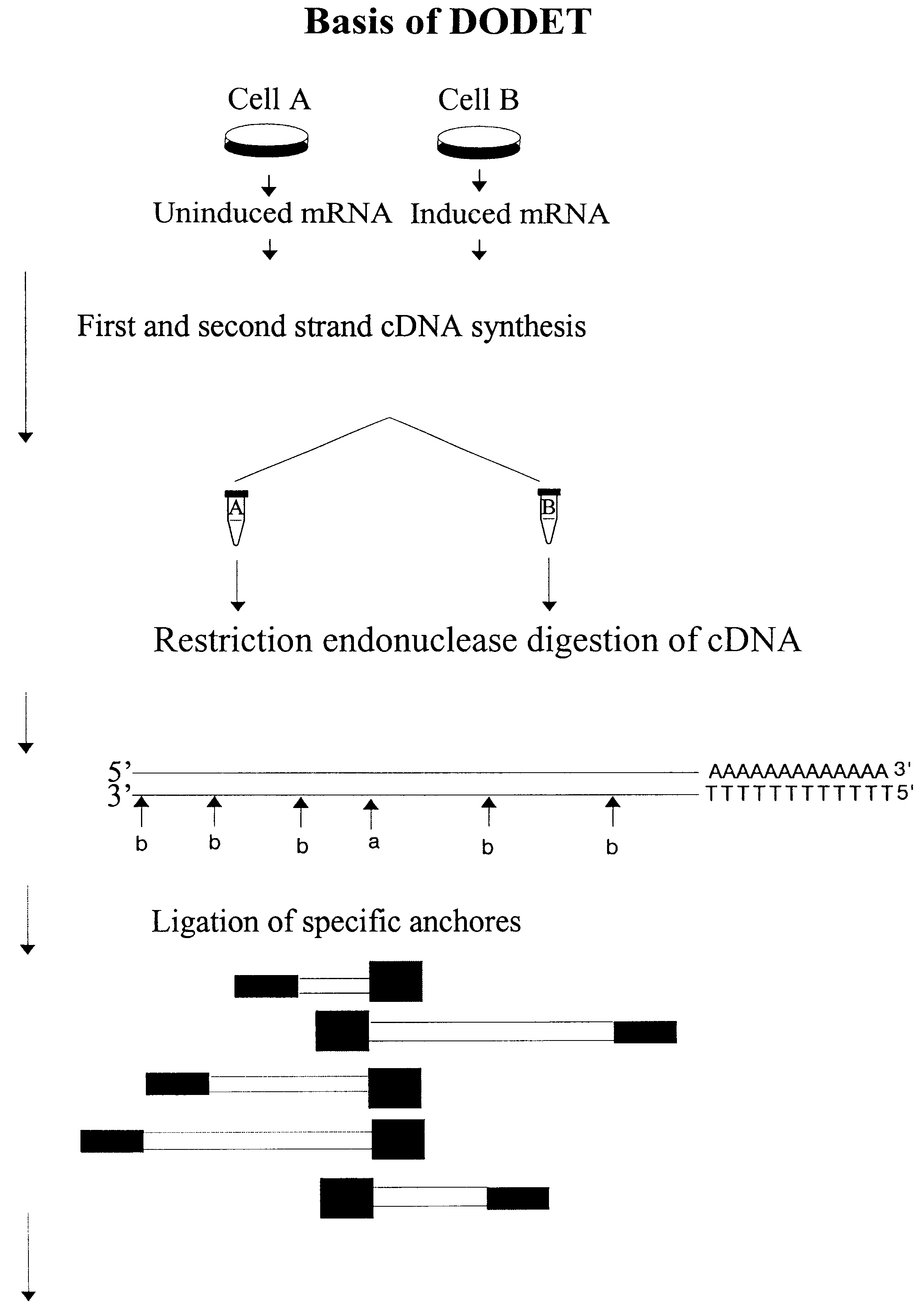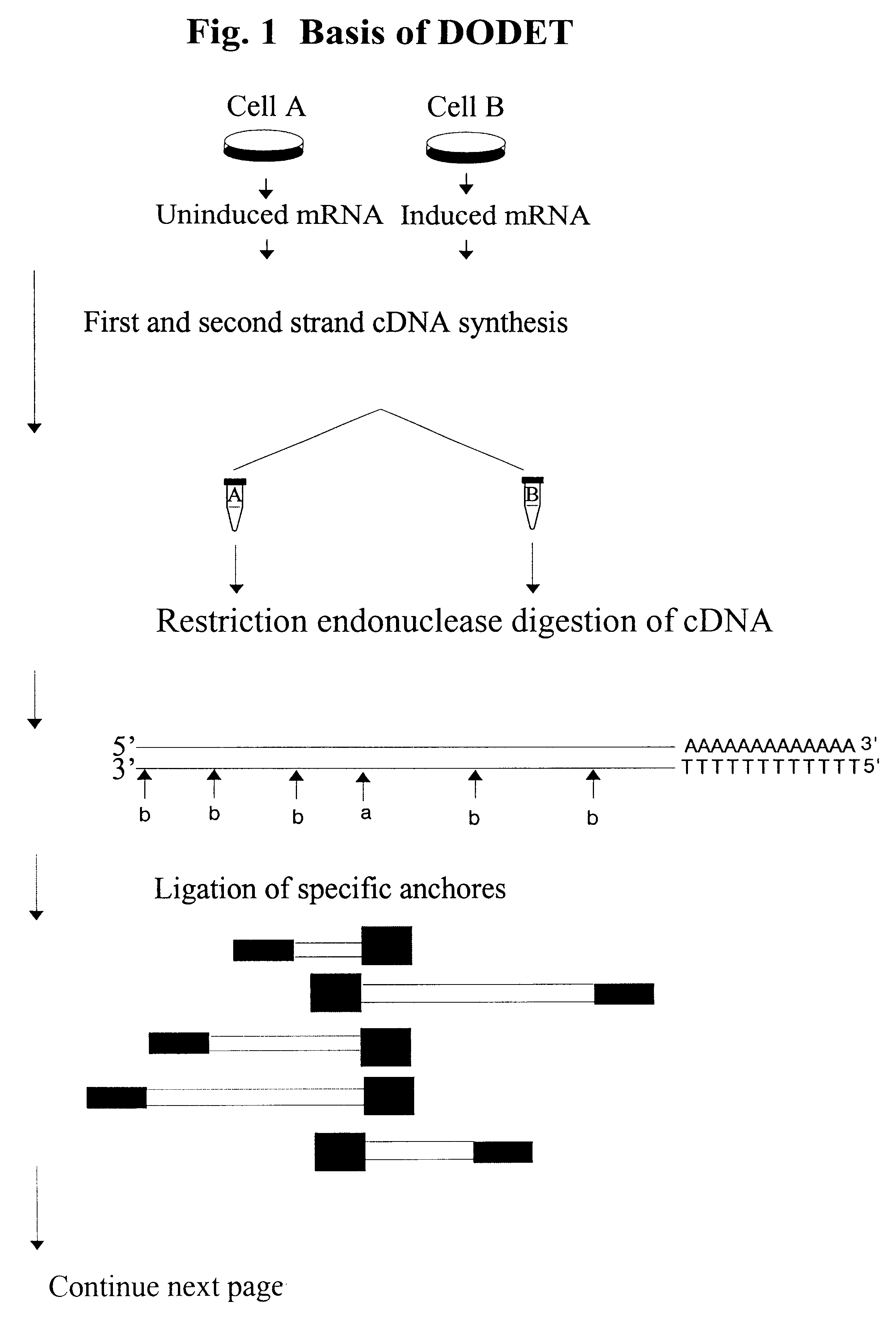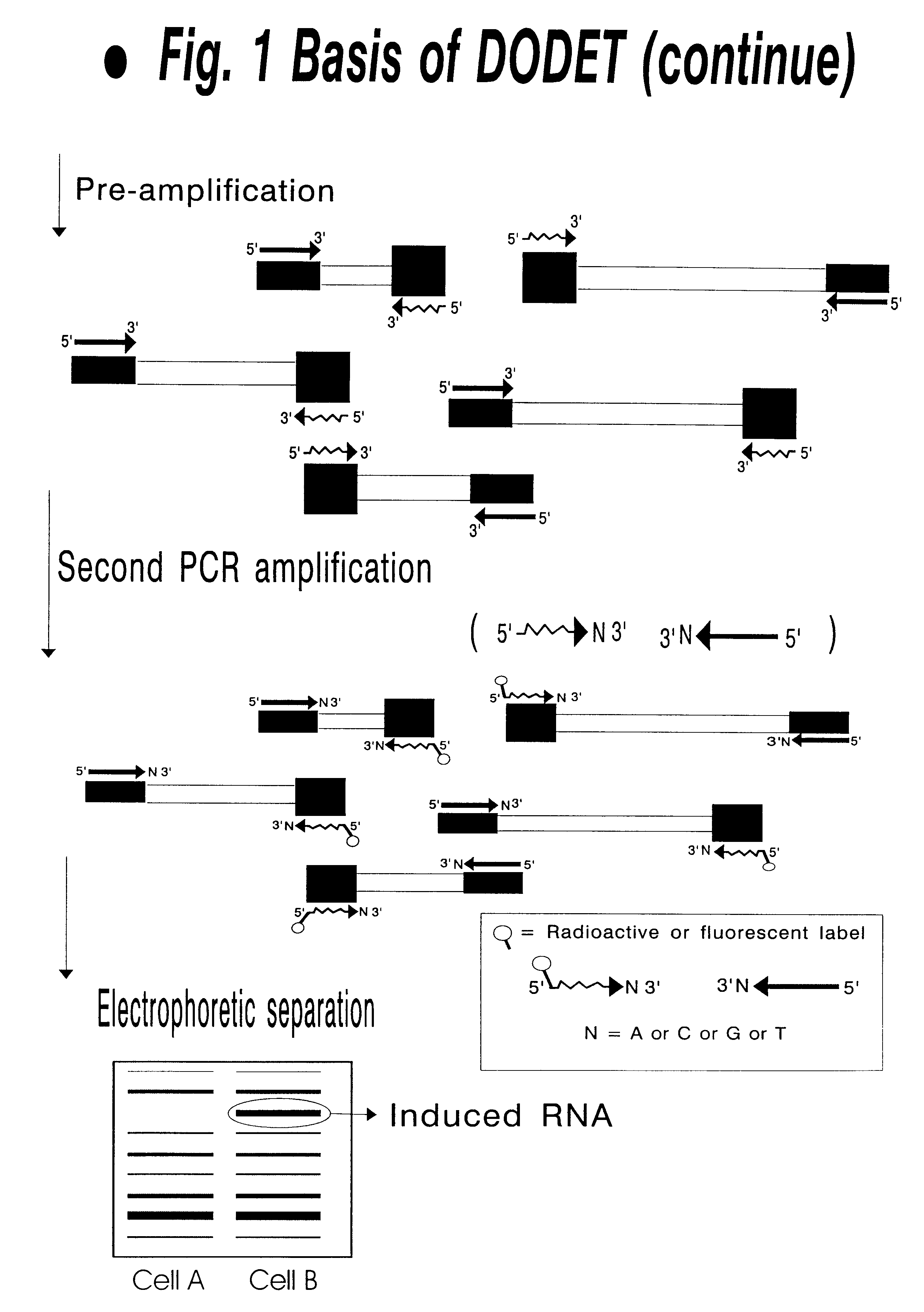Method to clone mRNAs
a technology of mrnas and mrnas, which is applied in the field of cloning mrnas, can solve the problems of lack of specific information that can be retrieved without significantly more work on the biology of each individual gene, and the function of the identified gene can be little and still less about the temporal and spatial expression patterns of the developing or mature organism, and achieves high homology, reduce the background no', and the effect of easy verification of the biological system
- Summary
- Abstract
- Description
- Claims
- Application Information
AI Technical Summary
Benefits of technology
Problems solved by technology
Method used
Image
Examples
example 1
The rat pheochromocytoma PC12 cells were grown (in vitro) in the presence and absence of Nerve Growth Factor (NGF) and epidermal growth factor (EGF) under growth conditions described elsewhere (Saltiel et al. 1996).
The total RNA was isolated using the standard single-step method by Chomczynski and Sacchi according to Sambrook et al 1989.
Total RNA concentration was determined spectrophotometrically and then adjusted to 0.2 .mu.g / .mu.l. This RNA was used directly in the Northern analysis.
For DODET 4.times.0.5 .mu.g total RNA was reverse transcribed in separated pools using the primer 5'-T.sub.25 AA-3'. The same procedure was performed using the 5'-T.sub.25 GC-3' poly-dT anchored primers, giving a total of 2.times.4.times.0.5 .mu.g of RNA.
First strand synthesis
20.0 .mu.l total RNA amount between 0.3 to 1.0 .mu.g RNA
3.0 .mu.l 5'-T.sub.25 AA-3' Conc. 100 ng / .mu.l or 5'-T.sub.25 GC-3' Conc. 100 ng / .mu.l
5.0 .mu.l 10.times.cDNA buffer (buffer B from Epicentre Technologies # R19250)
2.0 .mu.l...
example 2
FIG. 3 shows a typical DODET gel produced by amplification of template derived from treatment of PC12 cells with NGF or EGF.
Total RNA was reverse transcribed with the 5'-T.sub.25 AA-3' and T.sub.25 GC-3' poly-dT anchored primers, and after anchor ligation pre-amplification with BclI and TaqI pre-amplification primer pairs was performed.
6 out of 16 possible primer combinations are shown, using 1 selective base, at each restriction enzyme site (FIG. 3). The largest visible products (FIG. 3) are approximately 1000 bp in size and the lower end of the gel corresponds to approximate 100 bp. In this size window an average of 50 bands can be scored for each primer combination. In FIG. 3, various expression patterns can be detected.
Due primarily to the stringent conditions possible in DODET, resolution of the banding pattern is high while the level of background remains at acceptable levels (FIG. 3). Furthermore, quite radical changes in the intensity of individual bands over the treatment p...
example 3
During scanning of the PC12 cellular systems treated with NGF or EGF with different primer combinations, two RDFs (designated RDF01 and RDF02) exhibiting a differential expression during the NGF treatment were isolated (RDF01=RDF a=RDF b and RDF02=RDFc=RDF d. in FIG. 3).
After re-amplification, sub-cloning and DNA sequencing, further DNA analysis revealed two unknown RDFs upregulated after 60 minutes NGF treatment or 90 minutes EGF treatment in the PC12 cellular system. The nucleotide sequences of both RDF01 and RDF02 show less than 10% homology to any existing gene in the GeneBank or EMBL databases.
The expression of RDF01 and RDF02 was further analyzed using Northern blot (FIGS. 4a-4d). Here, transcripts could clearly be detected at 60 minutes NGF treatment or 90 minutes EGF treatment of the PC12 cells, confirming the results obtained using the DODET method, as illustrated in FIG. 3.
Experiments to clone the full length of RDF01 and RDF02, and biological characterisation of their inv...
PUM
| Property | Measurement | Unit |
|---|---|---|
| temperature | aaaaa | aaaaa |
| temperature | aaaaa | aaaaa |
| temperature | aaaaa | aaaaa |
Abstract
Description
Claims
Application Information
 Login to View More
Login to View More - R&D
- Intellectual Property
- Life Sciences
- Materials
- Tech Scout
- Unparalleled Data Quality
- Higher Quality Content
- 60% Fewer Hallucinations
Browse by: Latest US Patents, China's latest patents, Technical Efficacy Thesaurus, Application Domain, Technology Topic, Popular Technical Reports.
© 2025 PatSnap. All rights reserved.Legal|Privacy policy|Modern Slavery Act Transparency Statement|Sitemap|About US| Contact US: help@patsnap.com



